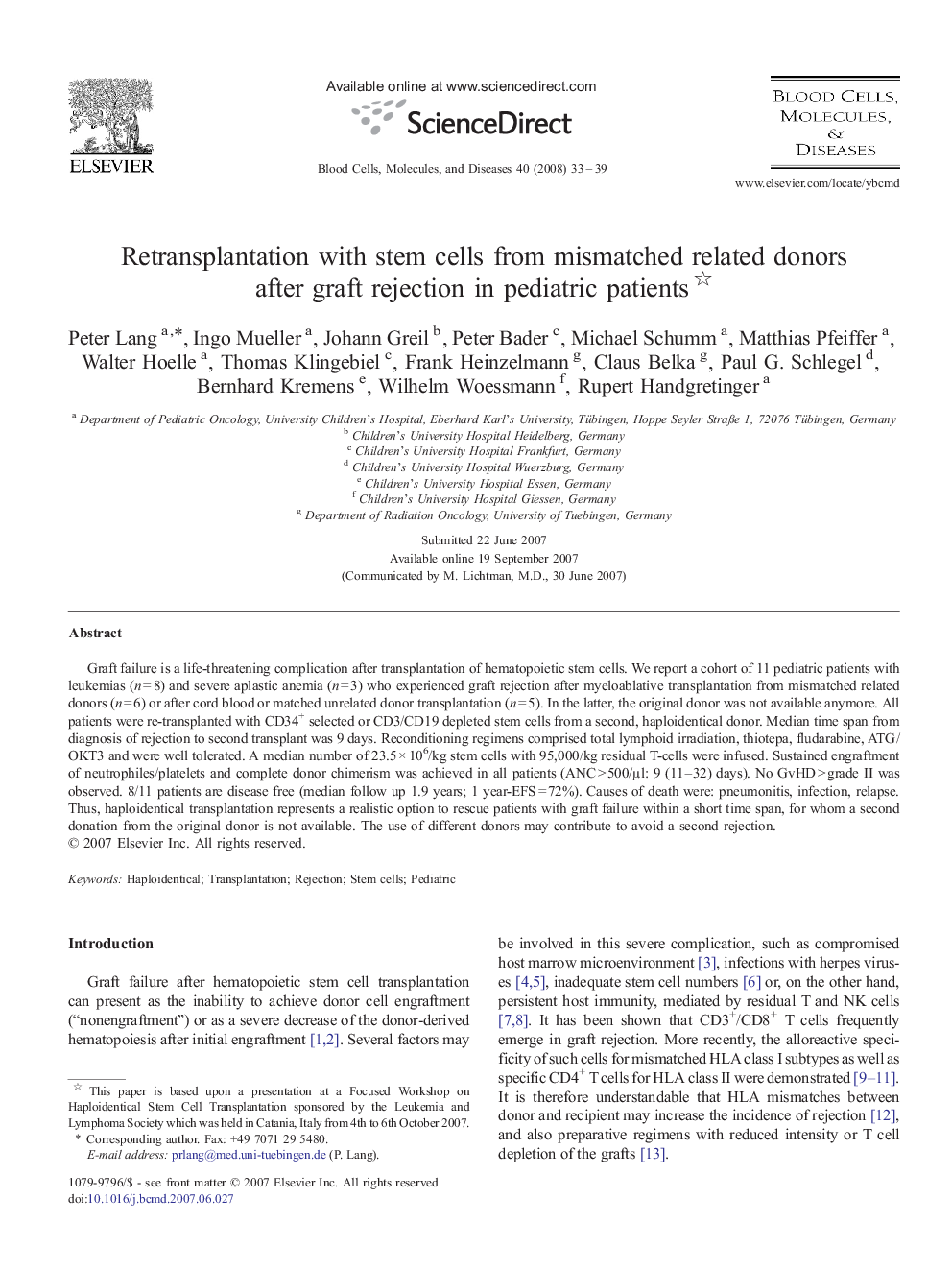| Article ID | Journal | Published Year | Pages | File Type |
|---|---|---|---|---|
| 2828082 | Blood Cells, Molecules, and Diseases | 2008 | 7 Pages |
Graft failure is a life-threatening complication after transplantation of hematopoietic stem cells. We report a cohort of 11 pediatric patients with leukemias (n = 8) and severe aplastic anemia (n = 3) who experienced graft rejection after myeloablative transplantation from mismatched related donors (n = 6) or after cord blood or matched unrelated donor transplantation (n = 5). In the latter, the original donor was not available anymore. All patients were re-transplanted with CD34+ selected or CD3/CD19 depleted stem cells from a second, haploidentical donor. Median time span from diagnosis of rejection to second transplant was 9 days. Reconditioning regimens comprised total lymphoid irradiation, thiotepa, fludarabine, ATG/OKT3 and were well tolerated. A median number of 23.5 × 106/kg stem cells with 95,000/kg residual T-cells were infused. Sustained engraftment of neutrophiles/platelets and complete donor chimerism was achieved in all patients (ANC > 500/μl: 9 (11–32) days). No GvHD > grade II was observed. 8/11 patients are disease free (median follow up 1.9 years; 1 year-EFS = 72%). Causes of death were: pneumonitis, infection, relapse. Thus, haploidentical transplantation represents a realistic option to rescue patients with graft failure within a short time span, for whom a second donation from the original donor is not available. The use of different donors may contribute to avoid a second rejection.
